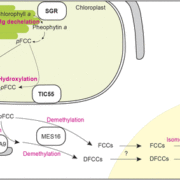
It’s Not Easy Not Being Green: Breakthroughs in Chlorophyll Breakdown
0 Comments
/
IN BRIEF by Jennifer Mach jmach@aspb.org
Plants can dispose of organs such as leaves and recycle the nutrients in these organs into new leaves, seeds, or storage organs. However, when separated from its photosystem proteins, chlorophyll can be phototoxic, absorbing light and producing high-energy…
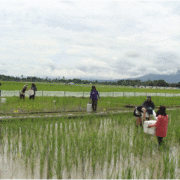
Field of Genes: Uncovering EGRINs (Environmental Gene Regulatory Influence Networks) in Rice That Function during High-Temperature and Drought Stress
IN BRIEF by Jennifer Lockhart jlockhart@aspb.org
Heat and drought stress greatly restrict crop productivity, but most of what we know about a plant’s response to these stresses comes from controlled laboratory studies. This factor, along with the complex nature of these responses, has hampered efforts…
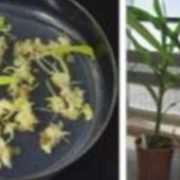
A Breakthrough in Monocot Transformation Methods
IN BRIEF by Nancy Hofmann nhoffman@aspb.org
The ability to generate transgenic plants without regard to cultivar or genotype can be considered a holy grail of cereal crop transformation. Despite years of effort, it has been remarkably difficult to develop efficient methods for transformation of…

Recognizing featured Plant Cell first authors, September 2016
Recently, we’ve been profiling first authors of Plant Cell papers that are selected for In Brief summaries. Here are the first-author profiles from the September issue of The Plant Cell.
Inmaculada Couso, featured first author of Synergism between inositol polyphosphates and TOR kinase signaling…

Recognizing featured Plant Cell first authors, August 2016
Recently, we’ve been profiling first authors of Plant Cell papers that are selected for In Brief summaries. Here are the first-author profiles from the August issue of The Plant Cell.
Aman Y. Husbands and Vasudha Aggarwal, featured first authors of In Planta Single-Molecule Pull-down (SiMPull)…

Examination of Protein Complexes Gets SiMPull
IN BRIEF by Jennifer Mach jmach@aspb.org
Assessing protein-protein interactions remains a fundamental challenge for plant biologists. Current methods such as coimmunoprecipitation (co-IP), yeast two-hybrid, bimolecular fluorescence complementation (BiFC), and others can produce artifacts and also yield…
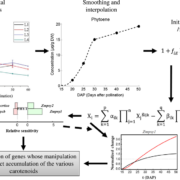
Improving carotenoid production in synthetic maize through data-driven mathematical modeling ($)
Carotenoids are nutritionally important phytonutrients. Comas et al. describe a strategy to enhance the production of cartotenoids in the seed endosperm. They start with quantitative metabolomics and gene expression data which they feed into mathematical models to determine which gene(s) need to be engineered.…

Recognizing featured Plant Cell first authors, July 2016
Recently, we’ve been profiling first authors of Plant Cell papers that are selected for In Brief summaries. Here are the first-author profiles from the July issue of The Plant Cell.
Fangwei Gu, featured first author of Arabidopsis CSLD5 functions in cell plate formation in a cell cycle-dependent manner
Current…
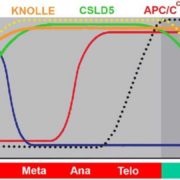
Divide and Conquer: Introducing a Novel Player in Cell Plate Formation
IN BRIEF by Kathleen L. Farquharson kfarquharson@aspb.org
Polysaccharide-rich cell walls are a distinguishing feature of plants that influence many aspects of growth and development, including cell division. Whereas contractile rings pinch dividing cells into two daughter cells in other eukaryotes,…

